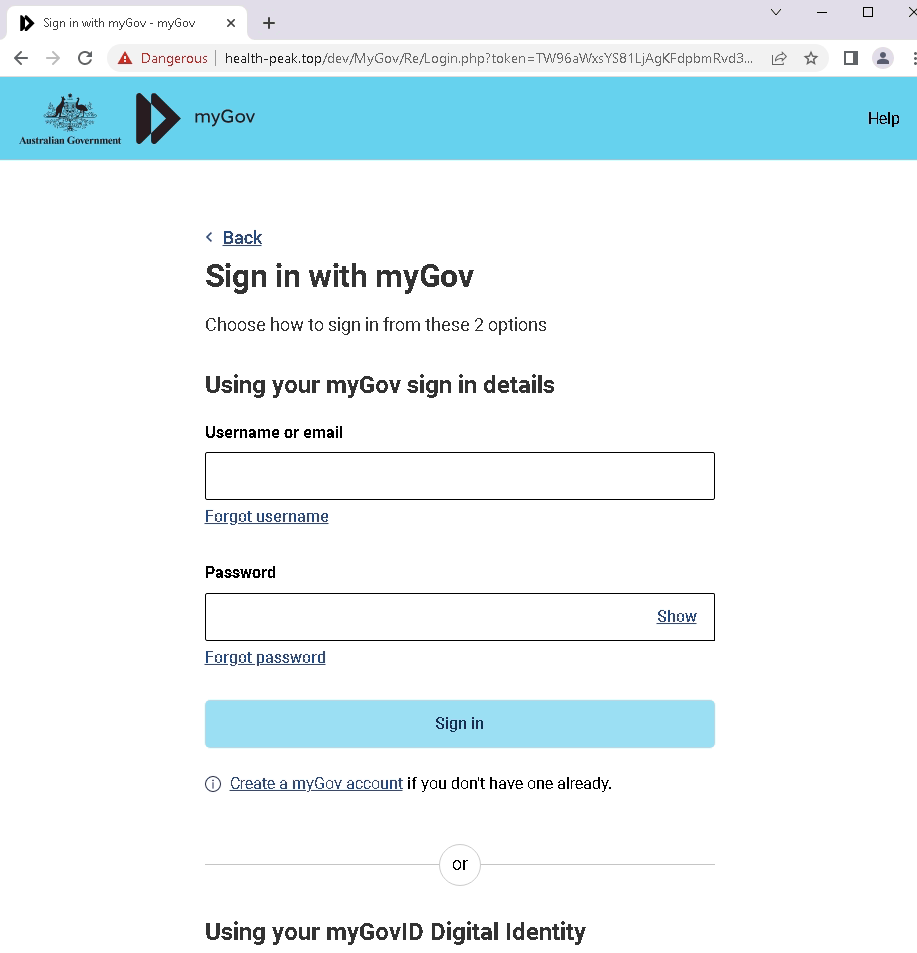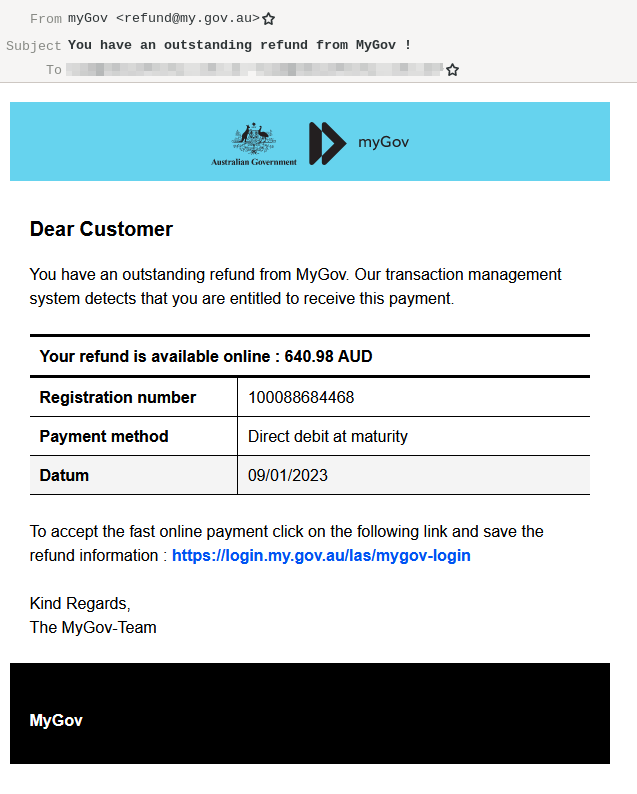The scam is in email format, with the subject “You have an outstanding refund from MyGov !”, and in its contents, recipients were told to pay $640.98.
The email seemed to be just another generic email that didn’t address anyone in particular, however, when recipients clicked on the link provided, they were taken to a fake myGov login page.
Phishing is a digital scam which sees websites being formatted to look like officials sites, with the sole intention to steal data from victims.
Recipients were then required to input their billing information, which included their full name, address, phone number, credit card number, credit card expiration date, and their card verification number.
Since the information was inputted into a fake website, the scammers received it, compromising the personal data of many Australians.

One such text sent by scammers say “myGov: Your income return of $1800.34 could not be processed due to insufficient information supplied please update immediate at My.update-income-portal-net”.
While it is not known if the email scammers are behind the text messages, MailGuard has warned myGov users to be wary.
They said it was not the first time they have intercepted these types of scams.
A myGov spokesperson said they would not send users emails or text messages with embedded links directing them to sign into their account, and they would never ask for a user’s personal details in that way.
“Always access myGov by typing in the web address yourself.” The spokesperson said.
MailGuard said Australians should delete phishing emails and text messages immediately, and to not click on any links or attachments, as even doing that could compromise personal information.
“MailGuard urges users not to click links or open attachments within emails that are not addressed to you by name.” They said on their website.
“Appear to be from a legitimate company but use poor English or omits personal details that a legitimate sender would include.
“Are from businesses that you were not expecting to hear from, and/or take you to a landing page or website that is not the legitimate URL of the company the email is purporting to be sent from.” They said.
The email address used by the scammers is “refund(at)my(dot)gov(dot)au”, with symbols being replaced to avoid linking to the site.






